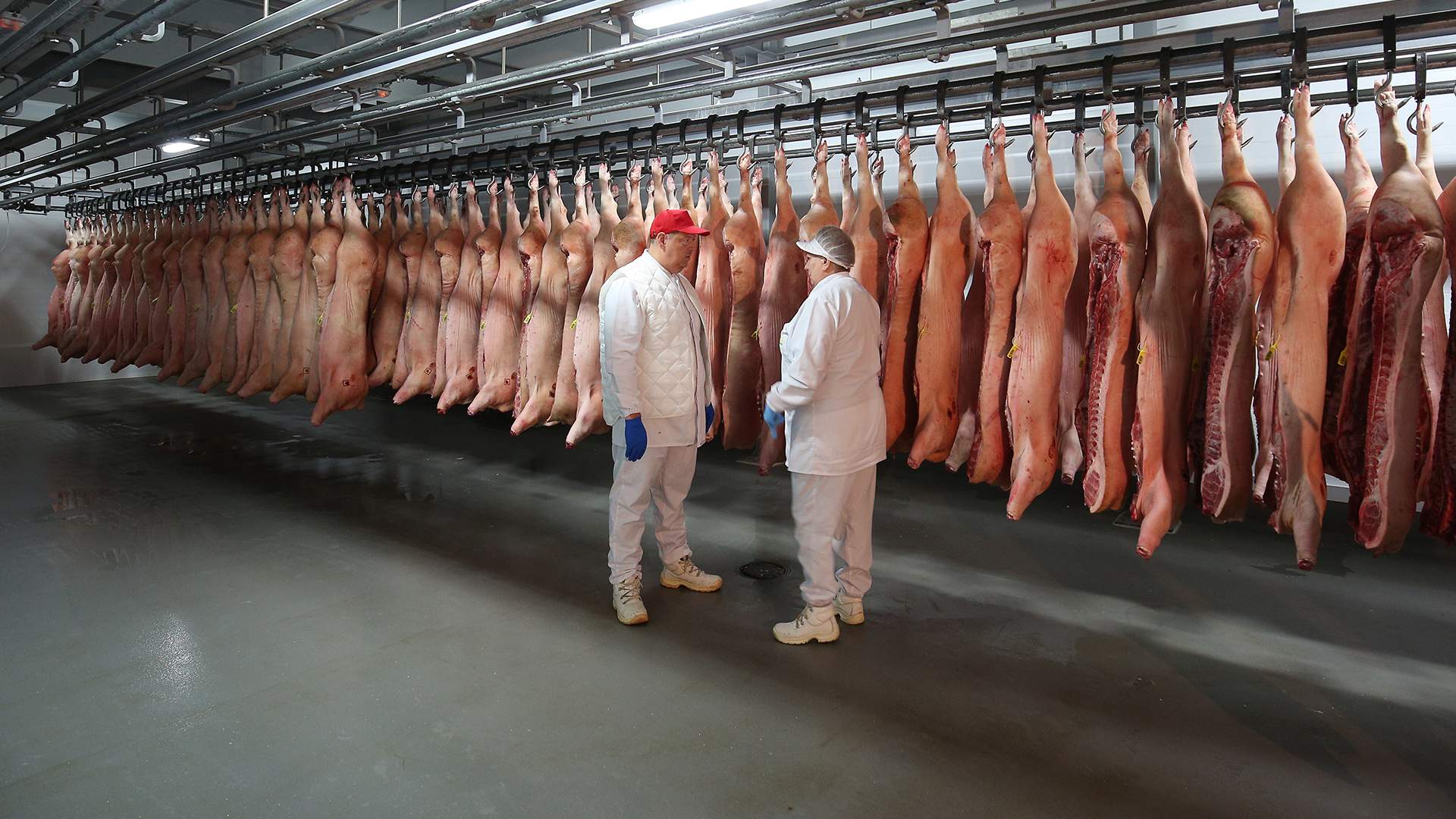
After 15 years of waiting: China has allowed pork supplies from Russia
By Rhod Mackenzie
The General Administration of Customs of the People's Republic of China has registered three Russian pork production companies and authorised the export of pork products from Russia to China from 28 February 2024. Goods produced after the registration date will be accepted for delivery. The 16-year ban on Russian pork in the world's largest market has thus come to an end. About the main stages of the return of Russian pig farmers to China and the chances of competing for Chinese consumers in market conditions.
Export opportunities
Pork production was the fastest growing branch of the Russian agro-industrial complex. If its volume was 2.3 million tonnes in 2010, it will almost double to 4.4 million tonnes in 2023. Despite the rapid parallel growth in consumption (almost one and a half times in 10 years), by the end of 2010 - x pig breeding enterprises and private farms were able to completely saturate the domestic market (imports had fallen to 17 thousand tonnes by 2022 with quotas of 100 thousand) and began to look for export opportunities.
However, entering the world market is not so easy. At first, exports grew quite rapidly: in 2022, growth reached 18%, but already in 2023 it slowed down to 6%. Russia is one of the world's top six pork producers (after China, the US, Germany, Brazil and Spain), but competitors have long been present in global supply chains, while the Russians have had to refine them.
Moreover, in countries that are logistically convenient for us, pork is either not in demand (Muslim countries, India) or access for Russian producers is closed for political reasons and/or due to the protection of the national market, which in both cases concerns the European Union. China seemed to be an undeniably profitable option for developing exports, but since 2008, after the outbreak of African swine fever (ASF), the Ministry of Agriculture has closed access to its market for Russian companies. Let us recall all the difficult stages of the return of domestic pork to China.
In late 2008,
the rapid spread of African swine fever in Russia, with around 60 cases, resulted in losses of tens of billions of rubles for producers. As China has been suffering from an epidemic for many months, it has decided to ban all supplies from Russia. The ban on supplies in the opposite direction, from China to Russia, has been in effect since 2004.
In 2013, the ban on supplies from Russia to China was also implemented.
The Ministry of Agriculture and Rosselkhoznadzor are starting negotiations to allow Russian pork back into the Chinese market.
In 2014,
China banned the import of Russian pork, but the ban has since been lifted, although import quotas still apply.
In 2018, China
opened its market to poultry meat supplies from Russia, and by
2020,
it had become the world's largest importer of Russian meat.
As of September 2023.
The ban on Russian pork supplies has been lifted by the General Administration of Customs of China.
In December 2023,
a protocol on inspection, quarantine, and veterinary and sanitary requirements for pork from Russia was signed in Beijing, followed by the approval of a veterinary certificate. Chinese experts inspected several Russian companies interested in supplying pig products to the Chinese market.
This led to the lifting of the ban on February 28, 2024.
Three Russian companies, SK Korocha (Miratorg), Velikoluksky Meat Processing Plant, and Tambov Bacon (Rusagro), have been registered in the CIFER system, which grants permission to begin deliveries at any time.
Although the prospects for entering the
Chinese market may seem limitless at first glance, it is important to note that China consumes approximately 60 million tons of pork per year. The figure has been increasing in recent years, although it is difficult to estimate the limits of growth due to the demographic situation in the country. Domestic production meets the vast majority of demand, amounting to almost 58 million tons in 2023. However, the remaining volume of 2.3 million tons is sufficient for exporters from many countries to earn billions of dollars. Spain, Brazil, the USA, Denmark, and the Netherlands are currently the largest pork suppliers to China.
However, the number of enterprises that receive accreditation in China will significantly impact the outcome. Experts interviewed by Izvestia agree that not all willing manufacturers will be certified.
According to Daria Snitko, the head of the economic forecasting center of Gazprombank, the list of certified companies will be limited, as this is the standard practice of Chinese departments.
“Any enterprise in the Russian Federation can register as a supplier and gain access to supplies, but the requirements are extensive. They mainly relate to traceability and veterinary safety of the entire production, from feed to finished cutting,” she explains.
According to Dmitry Rylko, General Director of the Institute of Agricultural Market Studies, the list of eligible enterprises will be limited due to quality concerns and the ongoing threat of African swine fever in China and globally.
Despite this, Snitko believes that the market share will remain small.
It is worth noting that the Chinese market is approximately ten times larger than the Russian market. According to the speaker, even with an optimistic forecast of 200-250 thousand tons of exports, the share will still be less than 0.5%.
This represents only about 10% of the total volume of pork imports to China, but still amounts to billions of yuan or hundreds of millions of euros.
Calculating the volume of supplies and market share is extremely difficult, and the timing may not be ideal for Russian exporters to enter the market. Dmitry Rylko stated that in China, there is an oversupply of pork and prices have fallen. It is evident that by-products will take priority.
